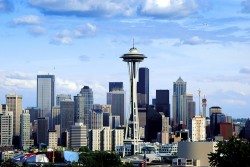
In our last installment, I showed how Oregon’s medical marijuana advocates pushed for expansive limits and suffered news reporting of the shenanigans in medical marijuana that led to the adoption of new legislative restrictions that the advocates blame mistakenly on legalization of recreational marijuana.
A somewhat similar path was forged in Washington State. Their law was more relaxed than Oregon’s in the first place, with no state registry requirement and allowing a “60 day supply” of marijuana, whatever that is (it’s like asking “how big is a dog?”) Lacking that state oversight, it was second-only-to-California-easy to get a medical marijuana recommendation in Washington. But medical advocates complained about lack of patient access and lobbied to grant nurse practitioners and naturopaths the right to make those recommendations as well. To nobody’s surprise, this led to an explosion in patient counts, including hundreds of young people getting their medical recommendations in a tent at Seattle Hempfest for $200 from three naturopaths.
The “60 day supply” was eventually addressed, with medical advocates arguing for the need for every patient to be allowed over four pounds of usable marijuana, a number that was revised down to match Oregon’s 24 ounces. That left every medical marijuana participant in the Pacific Northwest legal to possess a pound and a half of marijuana. Unsurprisingly, medical weed flowed eastward from Washington just like Oregon medical weed.
Washington had a head start on dispensaries compared to Oregon. Medical advocates zeroed in on the medical law’s language regarding caregivers, who were allowed to serve only one patient at a time and recoup the reimbursements for expenses. Storefronts opened up where the clerk was the “caregiver” and the next customer in line was the patient he cared for, who was then no longer cared for in favor of the next patient in line. So long as the clerk didn’t serve two patients at once… wink!
In 2011, Olympia tried reining in the dispensaries by establishing some regulations and creating a 15-day waiting period to switch caregivers. But then Gov. Chris Gregoire, fearing federal threats if she allowed legal marijuana sales, section-vetoed the dispensary regulations. So, did the medical community recognize, despite the veto, the political will against the storefront shenanigans and rein in the abuses themselves?
Of course not; they found a new loophole. The governor had just approved collective gardens that could serve ten patients at a time. So the storefronts switched from being caregivers for one patient at a time in line to collective gardens serving nine patients who grow, then adding the tenth patient in line who just completed a purchase, then dropping him from the collective for the next patient in line. Soon, storefront medical marijuana shops numbered over 300 in Seattle alone.
We’re supposed to believe in that had recreational legalization failed in Washington, Olympia would have just left this medical marijuana program alone?
To be clear, I am not happy about these changes to Pacific Northwest medical marijuana. Despite the obvious gaming of the systems and redistribution eastward of medical marijuana, there are some truly needy patients for whom 6 plants and 3 ounces will not be enough and prices at the pot shop will be too high. However, the notion that keeping healthy people subject to criminal arrest for marijuana would have protected those patients is ludicrous.
Furthermore, the perception of shenanigans in medical marijuana don’t stay contained to these states. The reason that arc I described in Part One has bent lately toward CBD-only states is because lawmakers and advocates in the successive states declare “this won’t be like California”. The only state yet to veto CBD-only legislation is Idaho, which has seized plenty of medical marijuana coming from neighboring Washington and Oregon.
As other states re-legalize marijuana, their existing medical marijuana programs shouldn’t be affected as greatly, since the succeeding states have placed limits and regulations on marijuana that will more closely match what can be expected for recreational marijuana. Only in the Pacific Northwest, where untaxed shops and a pound-and-a-half possession stand in stark contrast to taxed shops and an ounce possession, are these kinds of drastic changes going to happen.
Except California. What happens for legalization and medical marijuana there in 2016 is anybody’s guess, and it will affect the entire marijuana reform playing field thereafter.
(Coming up in Part Four, how Ohio legalization in 2015 may change the game for both medical and recreational marijuana going forward in 2016.)






